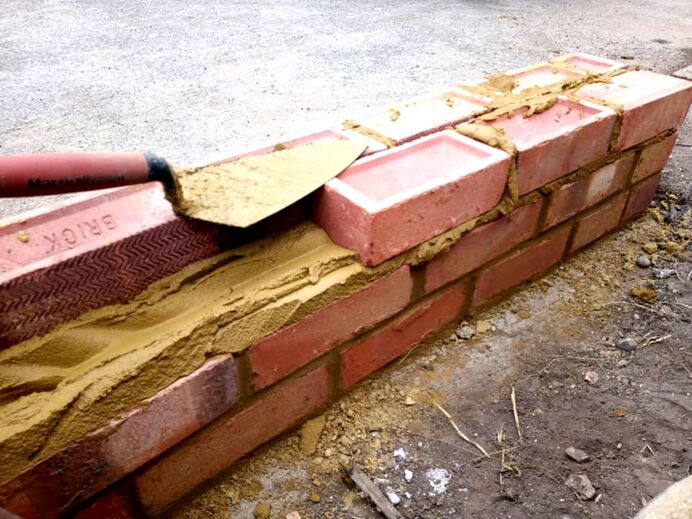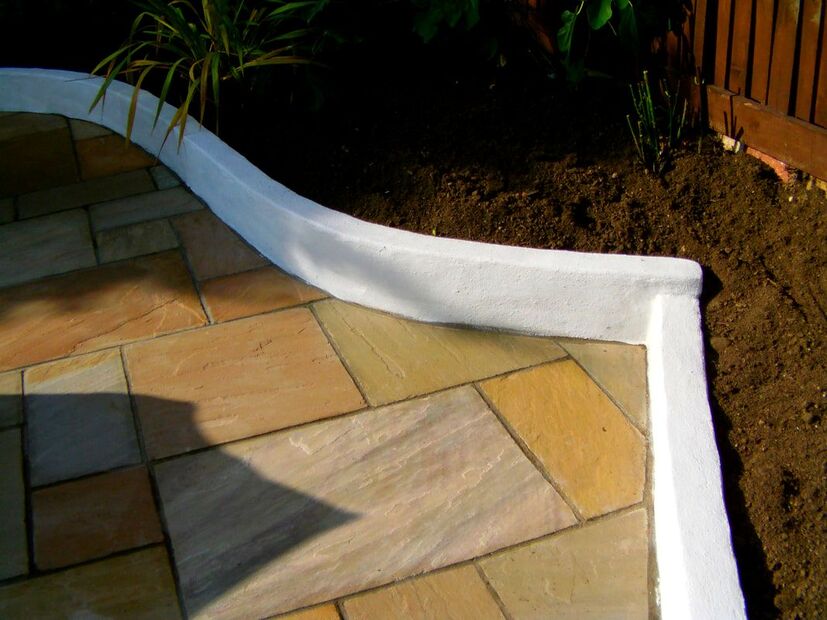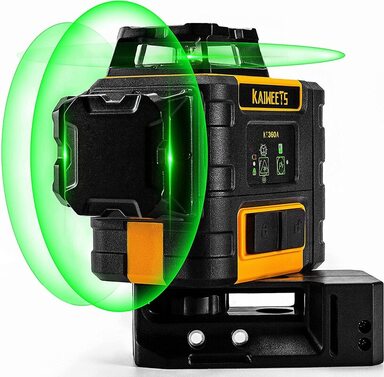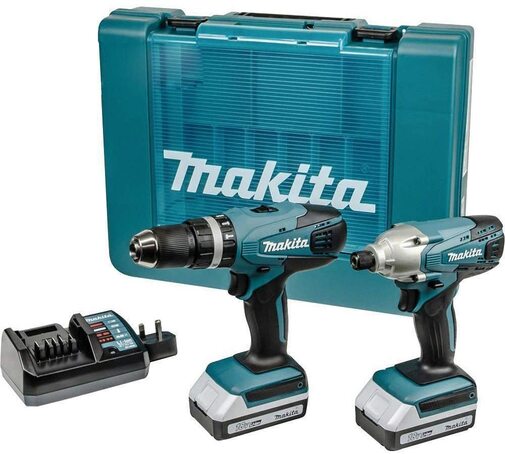|
This article contains affiliate links
Raised beds are a very popular way to create new planting borders in the garden. Very often garden beds at the natural ground level have many disadvantages.
Ground level borders typically suffer from rain shadows, excessive shade, bad drainage, shallow substrates and nutrient poor, soil medium. This can be a huge disadvantage if you want to grow plants to their full potential.
Raised beds give you the opportunity to raise growing areas up off the ground. This provides easier access, better drainage, more sunlight and a deeper growing medium of choice. For these reasons raised beds are particularly favourable for growing vegetable beds.
In this article we will list all the best tools for building raised beds and their specific uses. We will break them up into best tools for timber sleeper, brick and concrete block raised beds. Typical types of raised beds
When it comes to building raised garden beds there are three main types; Brick, concrete and timber. All three have their own advantages and drawbacks with varying levels of expense and skill. Brick raised beds
Brick raised beds are both aesthetically pleasing and robust. These will require the excavation an laying of a robust concrete foundation. This means they require quite a lot of ground preparation which makes them more on the costly side. Bricklaying is skilled work which requires laying multiple units with neat finishing. It is important to note that raised brick beds should be built two bricks thick for extra strength. This makes them by far the more expensive option but also one of the most durable and good looking. Concrete raised beds
Like brick raised beds concrete beds require a concrete foundation. The most common way to build concrete beds is with concrete blocks. These can either be laid on their side for extra thickness or wider hollow blocks filled with concrete. For more intricate shapes and forms, formwork can be constructed with timber and filled with wet concrete. Raw concrete work is rarely left as a facing so you have a few options to give them the finish you desire. Rendering, pebble dashing, tilling and cladding, all provide huge opportunity for a multitude of styles and effects. Timber sleeper raised beds
Timber sleepers are a very popular choice for installing raised beds. These do not require such a robust foundation and are quick to put together. Sleepers range in size but are generally between 200-250mm wide, 100-125mm thick and 2.4m - 3m long. The original use for sleepers was as a fixable base for railway lines. Hence the traditional name, railway sleepers. These large and robust timbers are the perfect size to retain soil and form attractive garden beds. These can be fixed to 4x4 treated, timber posts and concreted 600mm deep into the ground. Tools for setting out raised beds
Setting out raised beds correctly is very important as it allows you to create beds in proportion. This is even more crucial if you go for a traditional squared or rectangle design. 1. Folding set square
Large, folding set squares allow you to set out and work to perfect right angles. This is an essential part of building any rectangular raised bed. These also come in handy if you want bed edges square with the home even if they are a fair distance away. 2. String line
String lines are crucial if you want to build long and straight raised beds over distance. It is very easy when working at scale to drift off line and for beds to look crooked. Strings can also be used to flush bed levels as you build. 3. Spray line marker
Spray line markers allow you to accurately plot where raised beds are to be positioned. This can be useful for excavating foundations and anchoring post locations. Line marker can also help households come to a final decision on the exact location for beds. 4. Laser level
When building raised beds into the landscape setting out the correct levels is important. This is to ensure your raised beds lines will look proportional and consistent within the landscape. When working over distance it can be difficult to set up a consistent level without a laser level. Tools for excavating foundations for raised beds
No matter what type of raised bed you build it will normally require some digging. For brick and concrete work you will need to excavate foundations for concrete. Timber sleepers will need anchor posts concreted into the ground to be secure. To ensure the bases of timber beds are flat you will have to excavate level foot prints for them. 5. Spade
Spades are the go to digging tool which allows you excavate out sections of ground with ease. These allow you to dig out neat clods of ground and load them straight into a wheelbarrow. Their flat blades are perfect for chopping square edges and chipping off high ground. 6. Shovel
Like spades, shovels have many uses when building raised beds. However the most common use is to shovel up loose ground during excavations. Shovels are also useful for levering heavy sleepers into position. These are the go to tool when loading up barrows with aggregates for concrete and topsoil for filling beds. 7. Mattock
Mattocks are a kind of pick axe but have shorter and more robust working parts. Mattocks are most useful for chipping out sections of ground when digging foundations. These can be reached for when the ground is especially tough with multiple obstructions. Mattocks blades are very effective at chopping through roots and dislodging buried rubble. 8. Graft
Grafts are extremely effective at excavating out challenging ground. For building timber sleeper raised beds they are very effective at digging post holes. Grafts can also chop out roots and used to lever heavy materials into position. 9. Digging bar
Digging bars are long, heavy bars with a spear like wedge at the end. Their robust metal shafts and sharp chopping blades makes them perfect for cutting roots and digging post holes. 10. Wheelbarrow
Wheelbarrows are the ultimate way to load up loose ground from soil excavations. This is vital for post holes and concrete foundations allowing you to cart spoil with ease. These are perfect for loading up skips or heaps for grab Lorries to come and collect. Wheelbarrows are also used to hold mortar for brickwork and concrete for laying foundations. Tools for building Concrete & Brick raised beds
Masonry raised beds are some of the most durable and hard wearing you can build. These are typically built from bricks, concrete block or sometimes in-situ concrete formation. However sometimes these are created with natural stone and dry wall construction. Below we have listed the most important tools for building raised beds in this way. 11. Cement mixer
Cement mixers are great for mixing up concrete and mortar mixes quickly and efficiently. Concrete can be used to form linear foundations for brickwork and setting in anchor posts. Mixers are perfect for bricklaying mortars or mixing renders up for smooth contemporary finishes. 12. Brick laying trowel
Brick laying trowels are a primary tool for laying both bricks and concrete blocks. They can also be used to drag around concrete when tamping levels for concrete foundations. 13. Pointing trowel
Pointing trowels are effective for more intricate pointing work including filling mortar gaps and jointing coping work. Pointing trowels also have a multifunctional purpose and very useful for scraping clean tools while working. 14. Rendering trowel
With concrete and brickwork raised beds it is possible to go for a Mediterranean or contemporary look with rendering. Being more common for concrete block work rendering trowels are perfect for working smooth, vertical facades. 15. Tiling trowel
The great thing about masonry, raised beds is they can either be tiled or clad with natural stone. External cladding and tiling will require the application of weatherproof adhesive. This can be applied with a tiling trowel which has teeth to apply even beads of adhesive to the surface. 16. Spirit level
Spirit levels are an integral tool for building raised beds out of blocks or brick. Levels are also very useful for levelling concrete foundations and setting out. 17. Rubber mallet
Rubber mallets provide an easy way of tapping down masonry onto mortar mixes. Their soft rubber head allow for vigorous persuasion without the risk of breakages. 18. Club hammer
Club hammers are heavy set hammers that can be struck with a high level of force. These are perfect for tapping large sections of masonry into position. When used in partnership with bolsters these are very effective at splitting stone and blocks. 19. Bolster
Bolsters are short and broad masonry chisels which are specifically designed for splitting masonry. These can be used to cut bricks, natural stone and chop away concrete. 20. 12inch grinder & Diamond discWhen building masonry raised beds grinders are essential for straight and accurate cutting. When a good quality diamond disc is installed these are capable of cutting through pretty much any material. Grinders can be used to neatly cut bricks, blocks and natural stone cladding and copings. Tools for building Sleeper raised beds
Sleepers are a very popular material for building raised beds. Not only do sleeper beds look amazing they are relatively quick and easy to build. However these large and bulky timbers do need specific tools to work them into robust beds. Below we have listed and described the best tools for building sleeper raised beds. 21. Coarse hand saw
When working with any form of timber a good quality handsaw will provide a nimble method of cutting. Coarse handsaws with large teeth serrations are the best for cutting both sleepers and anchor posts. 22. Circular saw
Circular saws provide a fast and efficient way to cut all sorts of timber. However these power saws typically cannot cut all the way through sleepers. Circular saws can be used to get a square cut started and then can be completed with a handsaw. 23. Chainsaw
Chainsaws are the ultimate power tool for cutting though thick sections of timber. However it has to be noted that chainsaws should only be used by a qualified tradesperson. It is actually quite challenging to produce a neat cut using a chainsaw. In order to realise as neat a cut as possible a foldable chainsaw horse can be used. 24. Foldable chainsaw horse
These cutting tables are specifically designed to cut thick timbers easily with a chainsaw. The table allows the saw to move perfectly down at a right angle for a consistent cut. If you have a great number of sleepers to cut this method can be extremely efficient. 25. Carpenters square
When marking out cutting lines it is important that marking lines are perfectly at 90 degrees. This will ensure that cut edges will meet up neatly and provide a tighter join. The best way to mark out straight and square cutting lines is with a carpenter’s square. 26. Carpenters pencil
When building raised beds out of timber there is always a need for accurate cutting. Accurate cutting requires both accurate measuring and marking. The best thing to mark such heavy timbers is a good quality carpenter’s pencil. 27. Claw hammer
Claw hammers are always good to have to hand for any sort of timber constriction. These can be used to level up heavy timbers into position and nail braces between sections. 28. Power drill
The fixings for joining sleepers are much longer and thicker than traditional wood fixings. Timber lock screws are the go to fixings for raised bed sleeper construction. These robust screws need a powerful drill to drive them deep into the thick timbers. 29. Cordless drill
A good quality cordless combi drill with hammer functions can also be used to drive in sleeper fixings. Typically one drill is used to drill pilot holes and the other to screw fixings home. Cordless drills are much more nimble and suited for bracing sleeper plates together while building. 30. Belt sander
If you want smooth sleeper beds with rounded edges belt sanders can provide the perfect finish. These are normally preferred for school projects to reduce sharp edges and the risk of splinters. Belt sanded finishes are also good for contemporary schemes or raised beds which will require painting.
Thank you for reading our article on the best tools for building raised beds. If you found it useful why not share it via social media?
This helps us to write more useful content in the future. Furthermore if you require raised bed building services contact us here. Building raised beds yourself? Why not check out our article on how to build raised garden beds here. If you are planning on building a landscape project yourself check out our recourses page or essential tools article.
'As an Amazon associate I earn from qualifying purchases'
1 Comment
7/25/2022 02:38:12 am
You can build raised beds with just a few tools and materials. The most important thing you need is a place to put your garden. A raised bed will not work in an area where the soil is too rocky or clay-rich. And if you have a lot of heavy soil, building a raised bed will be difficult.
Reply
Leave a Reply. |
The Author
|
Landscaping services across Buckinghamshire, Amersham, Aylesbury & High Wycombe
Hyde Heath, Amersham, Buckinghamshire |
|







































